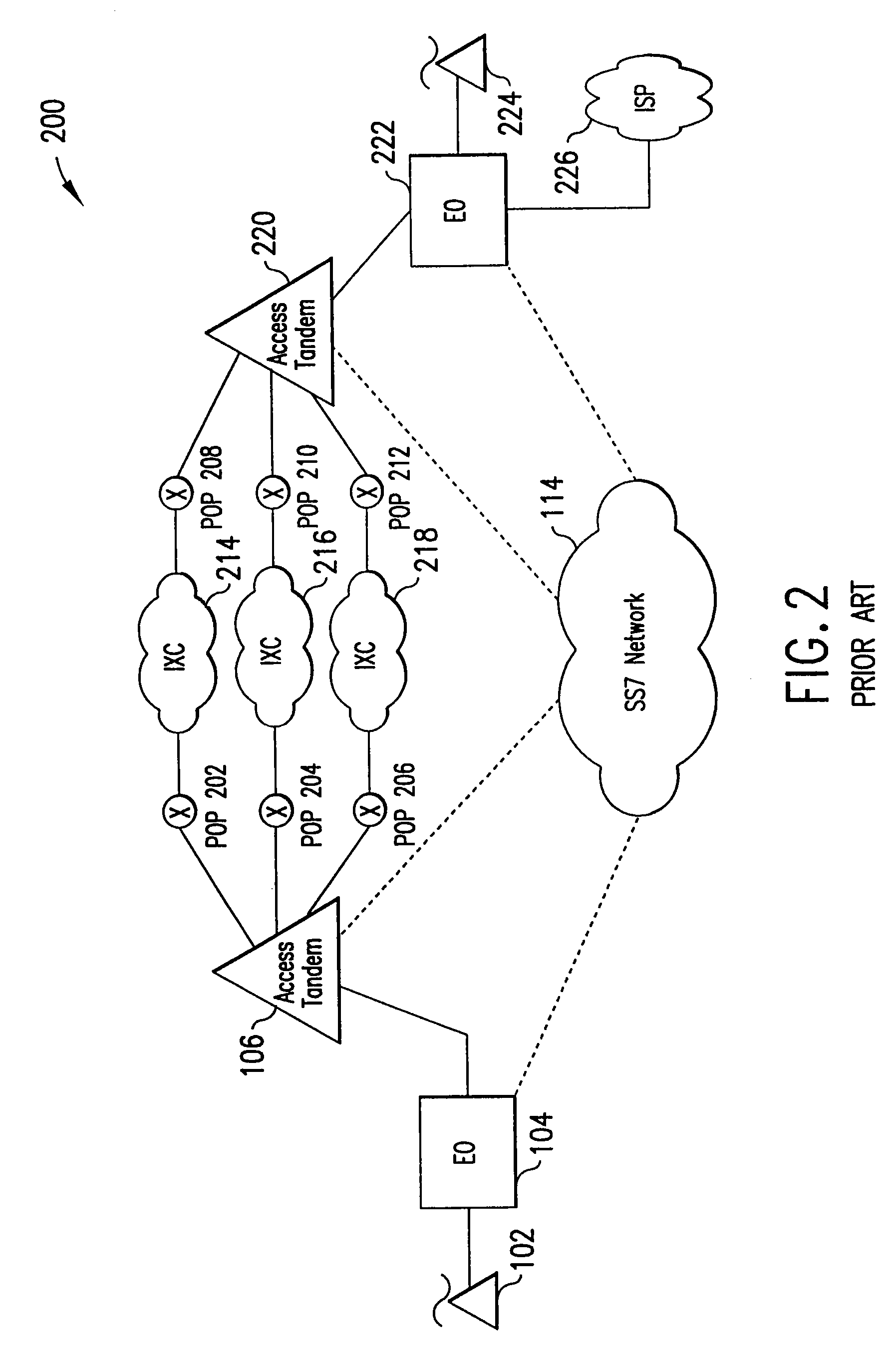System and method for bypassing data from egress facilities
a data exit and data technology, applied in the field of telecommunications networks, can solve the problems of in-band signaling allowing unscrupulous callers to use a device, still have deficiencies, and limited protocol ss7, so as to reduce capital expense, reduce cost, and save costs
- Summary
- Abstract
- Description
- Claims
- Application Information
AI Technical Summary
Benefits of technology
Problems solved by technology
Method used
Image
Examples
Embodiment Construction
[0073]
Table of ContentsI.An Example EnvironmentII.DefinitionsIII.IntroductionA.An Overview of a Telecommunications NetworkB.The Signaling NetworkIV.The Present InventionA.Overview of Data BypassB.Detailed Description of Data Bypass1.The Open Architecture Platform2.Data Bypass Operations3.NAS Bay to GW Communications4.Control Messages5.A Detailed View of the Control Messagesa.Startup Messagesb.Protocol Error Messagesc.System Configuration Messagesd.Telco Interface Configuration Messagese.Gateway Configuration Messagesf.Maintenance-Status (State) Messagesg.Continuity Test Messagesh.Keepalive Test Messagesi.LAN Test Messagesj.DTMF Function Messagesk.Inbound Call Handling Messagesl.Outbound Call Handling Messagesm.Pass-through Call Handling Messagesn.Call Clearing Messages6.Control Message Parameters7.A Detailed View of the Control Messagesa.Startup Flowb.Module Status Notificationc.Line Status Notification Flowd.Blocking of Channels Flowe.Unblocking of Channels Flowf.Inbound Call Flow ...
PUM
 Login to View More
Login to View More Abstract
Description
Claims
Application Information
 Login to View More
Login to View More - R&D
- Intellectual Property
- Life Sciences
- Materials
- Tech Scout
- Unparalleled Data Quality
- Higher Quality Content
- 60% Fewer Hallucinations
Browse by: Latest US Patents, China's latest patents, Technical Efficacy Thesaurus, Application Domain, Technology Topic, Popular Technical Reports.
© 2025 PatSnap. All rights reserved.Legal|Privacy policy|Modern Slavery Act Transparency Statement|Sitemap|About US| Contact US: help@patsnap.com



